Duration: 31 minutes
Season 2
Episode 10
L&D stories from the field
Excessive employee turnover, looming deadlines, and tight budgets. Common business challenges that great L&D programs can tame. In this special episode, we hear first-hand from training trailblazers Kim Bellini and Randy Schumacher, both TalentLMS Training Excellence Awards recipients.
We cover the unique ways that L&D can be your business’ biggest champion, learn their secrets to an effective training program, and uncover how they go about proving L&D’s true potential to the C-suite.

Key takeaways:
Relevance is everything. Training programs are successful when they solve real-world problems and meet learners’ needs. Relevant, engaging, personal, purposeful, and even entertaining content is essential to drive long-term success.
Feedback fuels better training, so listening to your audience is key. Gathering and acting on learner feedback turns training into dynamic, evolving content that really meets the needs of employees and customers. Plus, feedback is the secret to staying relevant and continuously improving.
Microlearning is the future. Short, focused training modules and bite-sized training sessions respect learners’ time while delivering a significant training impact. Combine this with blended learning for deeper understanding and engagement. Focus on small
Career development builds loyalty, this is why it’s crucial to invest in people. Career pathing goes beyond onboarding. It helps retain employees, create future leaders, and build sustainable organizations. Also, a clear career path forward inspires growth and commitment.
Scalable, user-friendly, and impactful software like TalentLMS empowers organizations to improve retention, foster growth, and make career development accessible for everyone. Simplifying training to supercharge your team’s potential is the A-Z in L&D right now.
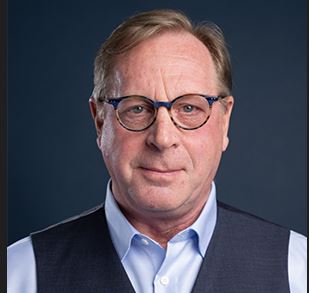
Randy Schumacher
About our guest:
Randy Schumacher has over 40 years of experience in Organizational Development and Training & Development. As a Navy pilot for 24 years he was a squadron training officer in two squadrons.
Randy held several positions in corporate training firms and eventually became the Vice President of Training and Development for the largest Internal Medicine Hospitalist group in the country. He currently is the Director of Learning and Development at 42 North Dental.
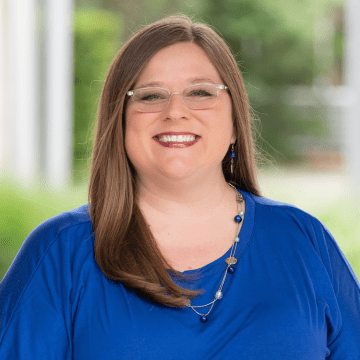
Kim Bellini
About our guest:
Kim Bellini has nearly 25 years of experience in the learning and development field. She spent eight years as a classroom teacher, gaining valuable experience in implementing best educational practices.
She spent eight years running an LearningRx franchise, receiving numerous awards, including Franchisee of the Year. These two career paths merged when she became a Corporate Trainer at Global Shop Solutions, a position she has held for the past eight years.
Share episode
Want more resources on this topic?

Research: What employees want from Learning & Development in 2024
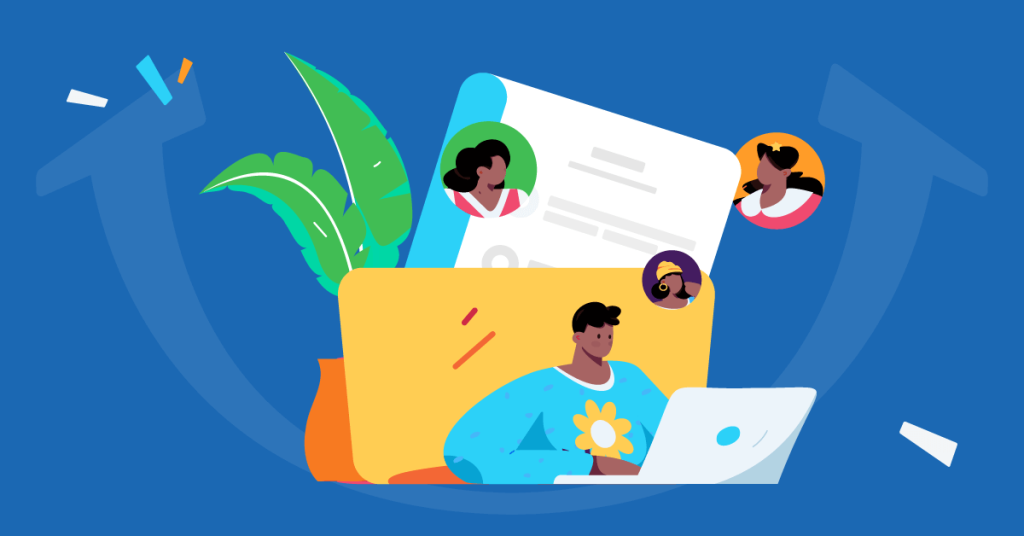
10 Employee Training Methods & Techniques for 2024
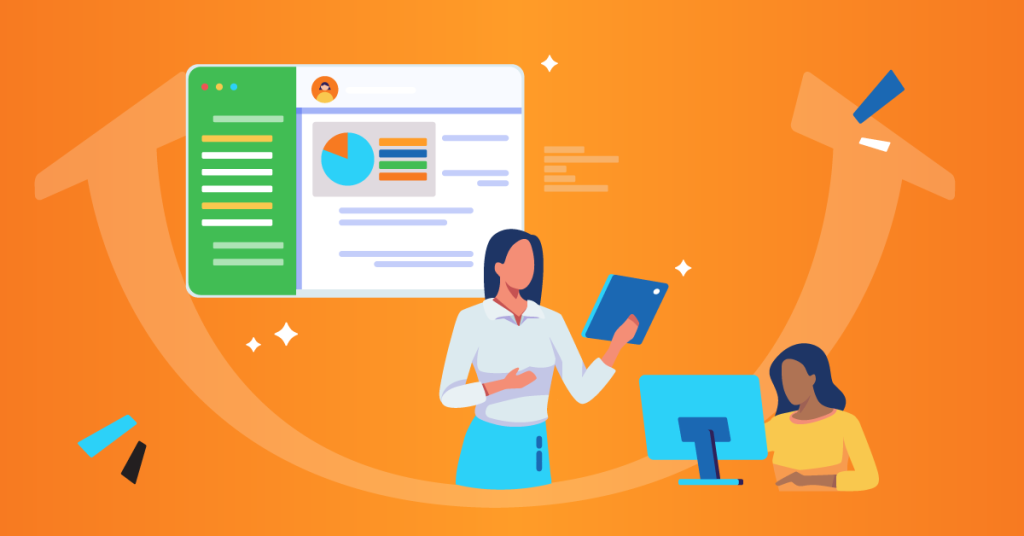
10 Best Corporate Learning Management Systems for 2024
More episodes we think you’ll love
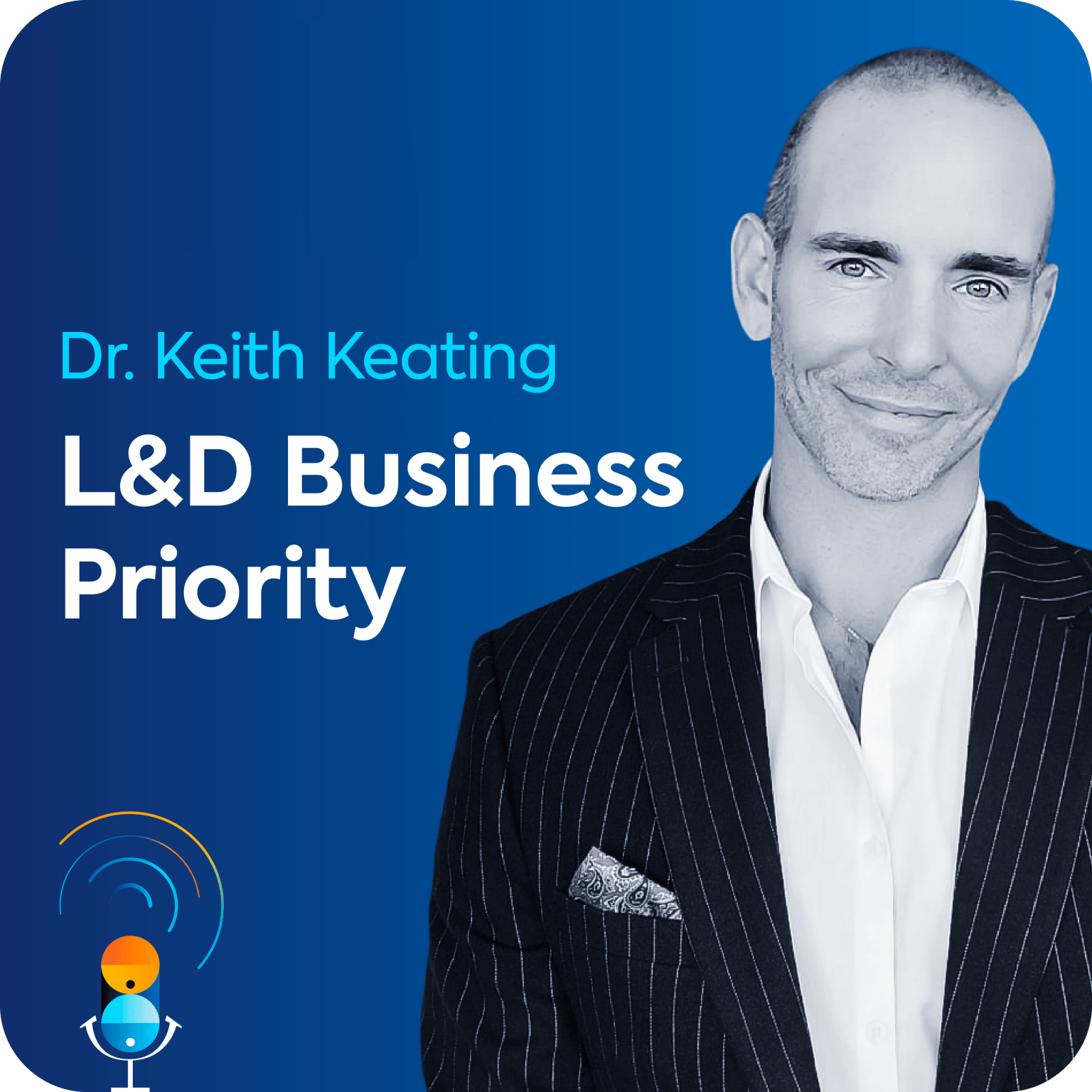
How can L&D overcome the 3 biggest challenges facing companies today? Why’s L&D failing to get approval from the C-suite? Dr. Keith Keating, the award-winning author of “The Trusted Learning Advisor” joins us to answer these questions.
Plus, we cover how to create a culture where L&D’s value isn’t just a number, and the critical importance of positioning yourself one step ahead of tech trends.
Go to episode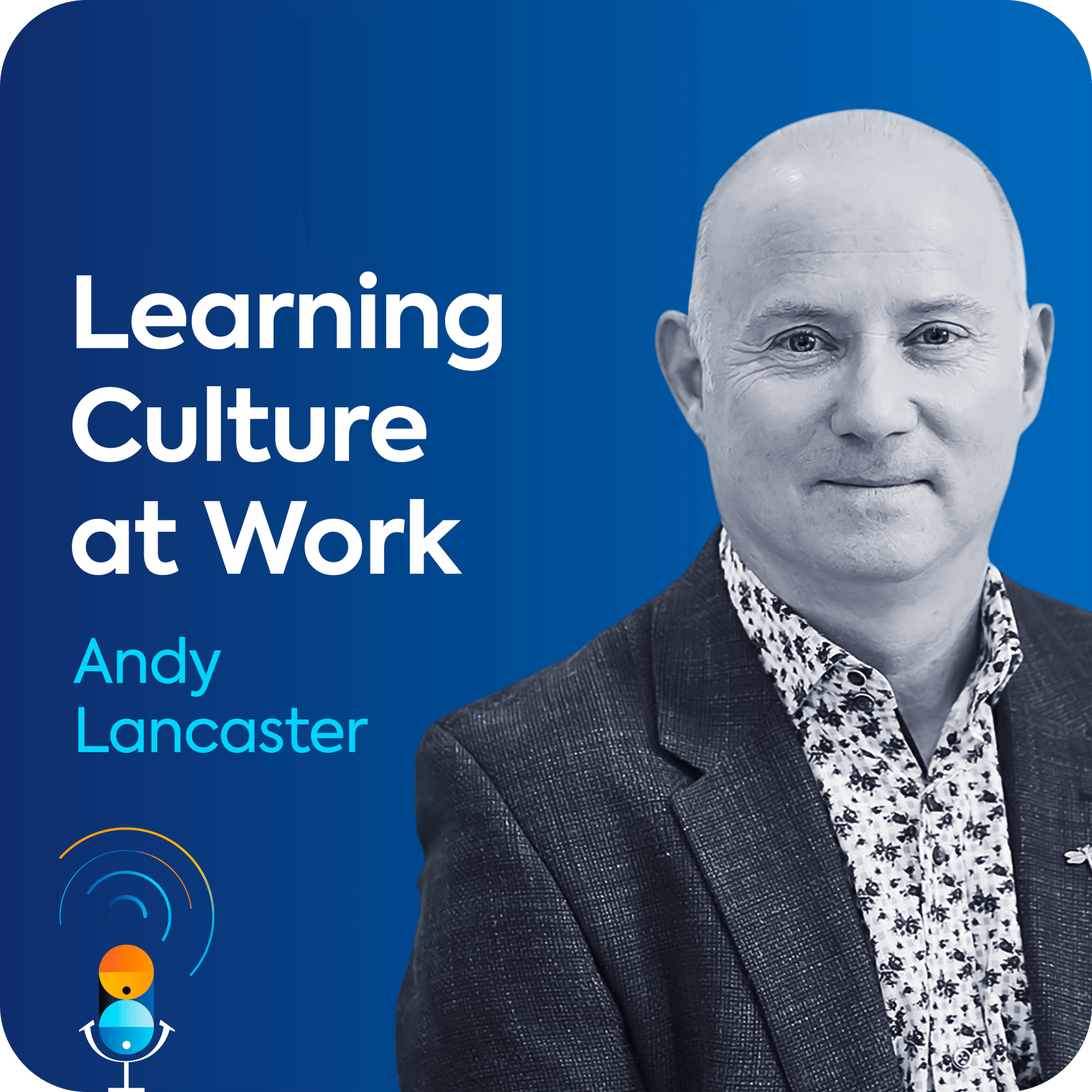
A strong learning culture fuels knowledge sharing and personal development. But how? Andy Lancaster, CLO of Reimagine People Development and award-winning author, helps us uncover the path to creating a workplace where employees are inspired to own their growth journey.
Go to episode
Never miss an episode! Get every new drop right in your inbox
By clicking the Subscribe button, you accept and consent to receive the type of content mentioned above. Please review the TalentLMS Privacy Policy for further information.
Video Transcript
[00:00:00] Host: Welcome to Keep It Simple, a podcast where we’re challenging business and leadership experts to cut through the noise of the corporate world and get to the bottom of what makes the workplace actually work. I’m your host, Mina Vogia. Keep It Simple is brought to you by [00:00:30] TalentLMS, the training platform built for success and designed with simplicity in mind.
[00:00:36] Together, let’s uncomplicate what makes a winning workplace. You can find out more at talentlms.com.
[00:00:47] On today’s episode.
[00:00:49] Randy Schumacher: So we are finding that we’re no longer doing hour-and-a-half online presentations. We have cut it. 30 minutes is long for us now. So if you [00:01:00] can do the training in 20 minutes and give people downloadable content that they can read at their leisure for those that like reading rather than viewing, you are hitting them right where they live and doing it to their liking.
[00:01:15] Host: We’re joined by two TalentLMS customers, L&D professionals Randy Schumacher from 42 North Dental and Kim Bellini from Global Shop Solutions. We’ll be talking about the challenges of a training overhaul, how a [00:01:30] dull binder can be transformed into an effective LMS, and their top tips when it comes to showcasing the very real, but sometimes intangible impacts of L&D to the C suite.
[00:01:42] Stay with us.
[00:01:51] Hi, Randy. Hi, Kim. It’s so nice to meet you. Thank you so much for taking the time to be with us today. How are you both doing?
[00:01:59] Randy Schumacher: [00:02:00] I’m great.
[00:02:01] Kim Bellini: Me too. Happy to be here. Thank you for having us.
[00:02:03] Host: It’s a pleasure. We’re so glad we were able to organize it. It’s the first time we’re doing an interview with two guests at the same time.
[00:02:12] So I’m really excited about it and I can’t wait to share with everyone your journeys and for our listeners, just so we can sort of jump right in. Can you give us a brief overview of the company that you work for and your role?
[00:02:29] Randy Schumacher: I work for a [00:02:30] company called 42 North Dental out of Boston, Massachusetts.
[00:02:34] We’re a dental support organization. We purchase dental practices. We partner with certain dental practices, and we provide back office support, HR-related issues, payroll, training and development, and things like that to support a dental practice so that they can focus on dentistry.
[00:02:57] Host: Amazing. And about your role [00:03:00] specifically,
[00:03:00] Randy Schumacher: I’m the head of learning and development and I’m responsible for all the content that we train our employees all the way from a front desk to a dental director.
[00:03:13] Host: Perfect. Thank you. And Kim,
[00:03:17] Kim Bellini: so like Randy, we also partner with businesses, but our business is a little bit different at Global Shop Solutions. We are an ERP software manufacturer. So companies and manufacturers use [00:03:30] our software to manage their, and every aspect of their business from taking a quote and gaining someone’s business all the way through the entire manufacturing process, and also taking a cash receipt and my role at global shop solutions is as their corporate trainer.
[00:03:48] And I, primarily, manage all of our onboarding of our new employees and interns, as well as our employee’s ongoing [00:04:00] professional development and their career pathing.
[00:04:03] Host: Before we go into your day-to-day, you’ve both come into these roles from different backgrounds. Randy, you’ve come from a military and programming background, and Kim, your path has been more from an educational angle.
[00:04:16] How would you each define your learning philosophy?
[00:04:20] Kim Bellini: Sure. So when it comes to my learning philosophy, and I think coming from an educational background, it gives me a bit of a unique perspective as well as eight years in [00:04:30] business ownership. So my learning philosophy really melds all of my previous experiences.
[00:04:36] So when it comes to providing training and learning opportunities for our employees and customers. I, want to make sure one, that the training is relevant. I feel like adults, when they are looking to learn something new, it’s often to solve some kind of a problem, right? So we go to Google to ask a question when we have an issue, we want to find out information.
[00:04:59] So [00:05:00] I want to take a similar perspective and angle with the learning opportunities that I provide our employees and customers.
[00:05:08] Host: And Randy, what’s your approach and experience been like?
[00:05:12] Randy Schumacher: My, uh, background in the military, I was a squadron training officer in a number of roles and teaching pilots how to land on aircraft carriers and learning the aircraft themselves.
[00:05:25] So, there was a lot of self-motivation for [00:05:30] learning the material that we were putting together. Unfortunately, in the civilian sector, that doesn’t happen as often there is a critical need to learn what you’re supposed to be learning. That’s why I kind of moved into medicine where there was a critical need.
[00:05:45] And I found even in those critical fields of medicine and dentistry, engaging your audience. Getting them to enjoy the material so that they complete it [00:06:00] and they go, they have an engagement to, to, to seek out additional knowledge. So creating material that is poignant, that is right on to what their needs are, as well as to make it enjoyable and entertaining is important for me.
[00:06:18] Host: It sounds like the basis for both your philosophies is relevance. And being interested in what you guys are teaching, but also what your [00:06:30] employees find interesting.
[00:06:32] Kim Bellini: Absolutely
[00:06:33] Host: And Randy when it comes to introducing an LMS to an organization, what were the biggest challenges you faced?
[00:06:50] Randy Schumacher: I joined the organization right at the height of COVID, and if you can think of a more impacted industry, dentistry [00:07:00] over the subject of COVID, so there was a lot of pressure to hit a home run with the selection of a learning management system. Most of our employees. Had never worked in a learning management system.
[00:07:15] Dentistry is more of a brick-and-mortar learning environment where you, you do training sessions at the practice and to convert that quickly during COVID was a [00:07:30] imperative. We started because our audience did not have the computer background to understand the flow of a learning management system.
[00:07:39] I needed to select a system that was going to be ergonomically friendly, intuitive, and we hit a home run with TalentLMS and over the course of three months, once we purchased the platform, I had to develop a fundamental course material and we [00:08:00] created four courses that were related to compliance that everybody in the company had to learn.
[00:08:07] And that was a good stepping stone for getting people on that training bicycle, if you will, to teach them with training wheels how to do online learning. And it’s been a, uh, a great ride ever since.
[00:08:24] Host: That’s really great to hear. And especially taking into account the fact that even though you’re [00:08:30] helping others learn and evolve, you’re also learning through it.
[00:08:34] Kim, I understand that your role didn’t even exist in your organisation before you.
[00:08:40] Kim Bellini: Correct.
[00:08:43] Host: That sounds like a bit of a challenge. So can you talk to us through how you approached it on a personal and a professional level?
[00:08:52] Kim Bellini: Kind of like what Randy indicated with getting quick buy in when before the LMS, when he started, [00:09:00] I was in a similar situation. I looked at what’s my low-hanging fruit here where I can get immediate buy in and excitement over taking all of this learning that used to be in a big white binder online.
[00:09:13] So my first few courses were one, our onboarding checklist, so we could streamline that system-wide. And then also our initial onboarding curriculum, where they go through and learn our software. So those were my quick wins. And [00:09:30] so that really helped our level of buy in and excitement when we had our excited new employees using this great new tool, it made people want to know.
[00:09:39] Host: That’s great. And for Randy. At 42 North Dental, there’s a staff of around 1, 700 and for the first year, it was just you and your department. How did you manage that process of scaling up and scaling up quick?
[00:09:58] Randy Schumacher: Well, I, uh, really wanted other [00:10:00] people to talk to in my department. I actually was located at the office originally for that first year.
[00:10:08] I knew that I needed to select courses that I could. develop myself that I didn’t have to rely on outside help because the first step was all, all mine. The company hired me specifically to do this. I was going to select a learning management system that was easy, not only for [00:10:30] me to create content, by the way, I’ve implemented nine other learning management systems in the past.
[00:10:36] I really wanted something that was ergonomically friendly and that. If we didn’t hit a home run on our first launch of our platform, it was going to have a negative impact. The elements were all piecemeal that I could, if there was a need for a change, I didn’t have to change the entire course. In order to [00:11:00] correct it.
[00:11:00] And so we had four polished modules, and as you can tell, I’m not a young man. I am, I am, this is my last job before I formally retire and go off and travel the world with my lovely wife. And I needed to have a home run and TalentLMS made it so easy. I have so much fun creating content [00:11:30] and putting a little bit of entertainment into it and just getting feedback from our employees that we’re hitting the mark and we’re helping them with not only skills development, but a career development as well.
[00:11:46] And I know Kim chime in here talking about career development.
[00:11:50] Kim Bellini: Absolutely. Yeah, that now that we got our onboarding as a well oiled machine, I want to take what we’ve done there and start applying it to [00:12:00] career development. And so we can retain our employees as owning a business for 8 and a half years. I know that it’s way cheaper to retain and train your employees well, then it is to go through the hiring cycle over and over again. So I, we have great retention, especially for a software company, but I want to make that even better. And so our employees stick around for the long term. So that’s my goal for this year is to start really developing great career path plans that utilize the [00:12:30] LMS and all of our in person learning that we do as well.
[00:12:33] Randy Schumacher: It’s interesting. You’re talking about, um, retention, uh, dentistry took it really hard in the last couple of years, retaining staff. And so, my whole focus from creating individual content has shifted now looking at career platforms, how to bring people on and take them through an entire career. And I’m heavily involved now with [00:13:00] leadership development.
[00:13:01] To bring the next generation of leaders forward.
[00:13:04] Host: I’m really glad you brought up the topic of employee turnover and retention. And actually, Randy, I did want to ask you, because as you mentioned, this has been one of your big goals since joining the company. What kind of processes did you put in place to really try and retain those employees you were losing?
[00:13:25] Randy Schumacher: We, uh, used one of the features on TalentLMS to create [00:13:30] surveys similar to course critiques, and every single course we put together, there is a course critique, and even more so than watching football on a weekend, I go back to new course critiques to see what we’ve done right or what we’ve done wrong.
[00:13:47] So I really paid attention to that. One of the biggest programs that we put together was for our front desk. And in that capacity, We had a very high [00:14:00] turnover rate and it was at the end of my first year. And I finally got a subject matter expert, my right-hand gal, Lauren, who joined me and she had no experience.
[00:14:14] In learning management systems, but she quickly evolved, learned it. And we created a whole five-day training program with a blended approach. And it was seamless. I have a computer background, Lauren [00:14:30] didn’t. And she found it incredibly easy to use the platform to develop content. And over the last three years now.
[00:14:40] We have been modifying and continually improving this content so that when we lose an individual, we try to find out why, what weren’t they taught. If, if you aren’t given the tools to, to do a job, you are that much more likely to [00:15:00] leave that position and at, at this point, we have over 350 courses in our library and I’m not even looking at the top of the mountain yet because there’s probably a thousand more that we can put together.
[00:15:14] Host: Randy, you’ve been with 42 North Dental since 2021. And Kim, you’ve been with Global Shop Solutions for eight years now in some capacity or another. A lot has happened in that time. How have you both seen the challenges in [00:15:30] training alter in the past few years? And what kind of things are you seeing more of now that perhaps you weren’t seeing when you first started out in your positions?
[00:15:41] Kim Bellini: I think for me when, you know, my first goal is taking the corporate training position, was to move our training into an online format, and my timing was really good in the sense that that was done, and then the pandemic hit. So it was very easy for us [00:16:00] to transition into onboarding our new hires and customers in a virtual manner.
[00:16:07] But as things started to improve with the pandemic and the world started opening back up the pendulum again, swung to, oh, all in person. I have, you know, online learning fatigue and I would say over the past 12 months or so I’ve seen that pendulum swing back towards the middle a little bit to where people are looking for a variety of different training options.
[00:16:29] [00:16:30] That’s kind of been my observations over the past six or seven years,
[00:16:34] Randy Schumacher: And I’m very similar to Kim’s experience that we are definitely the pendulum is swinging back more towards a blended learning approach to training and development and how to compliment the course material that you have online and drive the point home in a live environment where there’s more interaction, didactic learning.[00:17:00]
[00:17:00] Kim Bellini: And Randy, you had mentioned something earlier about getting feedback from your learners. And I think that is. If I had one piece of advice to give to people is always be open to feedback because you can see, you may think you’ve put the best course together, but you’re ultimately not getting great feedback on it gives you the opportunity to revamp it.
[00:17:21] And when you’re listening to your audience, you can therefore create more training that’s even more relevant to them. And when you show that you’re open to [00:17:30] feedback and making changes and creating new courses that someone may suggest. Then I think it really even highlights and makes the platform even easier to adopt for people when they know that the people behind the platform are there to support them and make them better in the long run.
[00:17:51] Randy Schumacher: I equate feedback to be like a baby, and it’s okay if you call my baby ugly.[00:18:00]
[00:18:01] A lot of people get very sensitive about criticizing something, that baby that you created. And I don’t take it that way. I think it’s an opportunity to make that baby look better.
[00:18:13] Kim Bellini: Yeah, and that’s, it’s our art, you know, so it is sometimes you have to step out of that a little bit and not take it personally when someone offers feedback, they’re not doing it to criticize you as a human, but it, but it [00:18:30] does, it can kind of sting if you don’t step out of it because we put so much into what we do.
[00:18:35] Host: Something that’s become quite a talking point recently is showing L&D’s ROI and essentially proving training’s impact. So, before rolling out your successful training programs, what was your approach to this?
[00:18:50] Kim Bellini: That’s a great question. And I kind of relate measuring ROI for learning and development programs, because it is [00:19:00] somewhat difficult.
[00:19:01] It’s a little more muddy than trying to measure something else within a business. But I think back to when I had my franchise and we did a lot of public relations and those, that’s also very difficult to measure that ROI, you know, it’s there, but how can you prove it? But when it comes to the L&D programs, I do feel like the ease of reporting within TalentLMS made a huge difference [00:19:30] in being able to have some data to work with to know, you know, how often people were logging in and completing courses that have helped tremendously and being able to measure that ROI.
[00:19:42] Randy Schumacher: For me, it was a little bit challenging at first. And I just looked, I have a. degree in finance. So the time value of money, I considered how much time we were saving for everyone who was [00:20:00] used to doing multiple training sessions over and over again, the travel costs associated with that, and the consistency, the standardization.
[00:20:11] So when I first calculated our first-year impact on how much we saved by standardizing, having it all online so that everybody hears the same message. It was, it was fairly easy, but then it [00:20:30] gets into that challenging point of did the person learn something and did they change their behavior because of that, that is in L&D speak, it’s a Kirkpatrick model of learning and development. Number one, level one, is did they enjoy the training? And I’ve already talked about that level two. Did they learn something from it? So every one of our courses has quizzing involved and knowledge [00:21:00] checks involved to make sure that they actually learn the material.
[00:21:05] Did they change behavior? Is level three. Did they alter their approach? And we would take surveys. This, this five-day course for the front desk, we would do a training survey 90 days out after they went through the training to see what their skill sets are in all the areas, and we’d give that assessment to the managers [00:21:30] so that they would give us feedback and that was extremely valuable to measure improvement and then finally level four is exactly what you’re talking about Mina.
[00:21:42] What is the return on investment? So you can calculate the time savings. You can calculate things like a turnover and for the front desk, we cut our turnover in half. And in one year, the recruiting [00:22:00] costs of hiring those types of people, training them was huge cost savings for us.
[00:22:07] Host: And I mean, honestly, this is the challenge.
[00:22:11] of L&D, proving its worth. It’s, it’s the long game. And so hopefully your CEOs, your managing directors, they’re also thinking ahead, and they see how this is actually going to help in the [00:22:30] long run because they’re not going to see instant results and that’s fine. And that’s not necessarily the goal, but we just lived in this really fast-paced world where we want instant gratification, instant results, and proof of our success.
[00:22:49] Randy Schumacher: Mina, you bring up an excellent point about the fast pace of culture. I am addicted to a platform called TikTok and it has carried [00:23:00] over into what I’m trying to do nowadays. And going back to a previous question, I’m trying to make my content shorter, sweeter, to the poin,. and so engaging and informative.
[00:23:11] So we are finding that we’re no longer doing hour-and-a-half online presentations. We have cut it if 30 minutes is long for us now. So if you can do the training in 20 minutes and give people downloadable content that they can read at their leisure, [00:23:30] for those that like reading rather than viewing, you are hitting them right where they, they live and, and, and doing it to their liking.
[00:23:39] Kim Bellini: I completely agree with you there. And that was our original intent too, after we did the onboarding and we started creating courses for our other end users, our customers, my goal was to provide courses that were short that people could do in 10-15 minutes during a break to make the platform a little more [00:24:00] flexible and usable.
[00:24:01] Host: That’s great. And that sort of leads me to my next question for you, Kim, where Global Shop Solutions training journey went from rolling out a program internally to realizing that this was something you could do for your customer base too. Can you talk us through how that came about?
[00:24:20] Kim Bellini: Yeah. So as I had said earlier, I’d started the LMS initially with all of our new employees and interns.
[00:24:27] So when I first took the role, [00:24:30] I within 60 days, I was going to have to onboard 24 interns on top of new employees. So that was quite a chunk. So I had to do something fast. And so I got those onboarding materials into the LMS. So I could make that easy to distribute. And so once a quantity of people started using the LMS and leadership started seeing it, they realized that this would be great for our end users.
[00:24:58] And so my boss [00:25:00] gave me 90 days to get something spun up. So I hate to refer to the low-hanging fruit again, but I looked at what is some content I can create really fast, even if it’s not necessarily ideally where I want to be. So every Friday we do, um, a webinar, uh, called Friday features where, uh, are some of our global shop employees will conduct a webinar for our end customers to talk about updates and new and great and exciting things and events coming [00:25:30] up.
[00:25:30] So I took those videos. I edited them down to their core content, segmented that out into a table of content so people could skip around if they wanted to, and then a quiz at the end that people could take and earn a certificate. And then I slowly started adding in the content that I was super excited about that with the micro learning modules to start offering [00:26:00] to our customers and employees as well.
[00:26:02] Host: I do want to ask you, what have been some unexpected differences in the way that external audiences need to be trained compared to internal audiences?
[00:26:14] Kim Bellini: I think when you’re training your internal employees, we have a tendency to be a little more lax with acronyms and not explaining those out necessarily, which can also be a disadvantage to a new [00:26:30] employee.
[00:26:30] All those company terms. I think internally we use a little more freely, but when we are looking at training our customers, we have to make sure we are explaining those terms and those acronyms out really well. And with having so many different types of end users, it is a huge challenge to meet in the middle and also meet everybody’s needs at the same time.
[00:26:58] It is tough. [00:27:00]
[00:27:01] Host: Now, we’ve heard about your journey so far and you touched on this a little earlier, but I wanted to ask again, what’s on the horizon for your training programs in the coming year?
[00:27:13] Kim Bellini: For us on the horizon is creating a career pathing program that is just as strong and awesome as the onboarding that we currently do.
[00:27:24] So we can carry that experience through an employee’s term and help develop them [00:27:30] as people, as employees of our organization to make them more knowledgeable about our product. But, you know, I think developing the person is so just critically important so that even if they don’t stay with us, they leave our organization ready to grow into another position somewhere else.
[00:27:54] Host: And Randy?
[00:27:56] Randy Schumacher: The CEO, the former CEO of General Electric, Mr. [00:28:00] Walsh said that he would create leaders that were used throughout. The industry, not just General Electric. And I’m taking that philosophy. I’ve been heavily involved the last year of doing a blended learning leadership development program.
[00:28:16] We’re in our second cohort this year, and my goal is to develop leaders. And originally we started with just dentists who wanted to become dental directors and owning their own practice. Now we’re, now we’re [00:28:30] inviting up-and-coming dentists, practice managers, who want to improve their leadership skills.
[00:28:38] Host: And finally, for our toughest question, in one sentence, what is the secret to an effective training program?
[00:28:50] Kim Bellini: In one sentence, I think an effective training program offers relatable and useful content that helps [00:29:00] solve an end user’s problem or challenge that they’re facing.
[00:29:04] Randy Schumacher: I think making it entertaining and informative, that is a challenge. My company’s name is 42 North Dental, and we created a segment that helps people be the best.
[00:29:19] It’s an interview segment we call 42 Minutes. And we get a lot of people tune in to 42 Minutes, and so people who enjoy what you [00:29:30] do and thank you for what you do drives me to not want to retire in a couple of years.
[00:29:39] Host: Perfect. Well, Kim and Randy, thank you so much for taking the time to talk to us. And Share your journeys with our listeners.
[00:29:48] I’m sure that other L&D professionals listening in will be inspired and hopefully will learn something from your trials, tribulations, and [00:30:00] successes.
[00:30:00] Kim Bellini: Well, thank you so much for having us. This is a lot of fun.
[00:30:03] Randy Schumacher: I totally enjoy it. And, uh, I love what TalentLMS has given to our organization and to my career, especially.
[00:30:19] Host: Thanks for tuning in. In this episode, Randy spoke about his plans for leadership training, and for those of you with similar plans, our next episode is a must-listen. We’ll be talking to leadership coach Nina Newberry. You can find Keep It Simple on all podcast platforms. Be [00:30:30] sure to subscribe so you don’t miss an episode. This episode of Keep It Simple was brought to you by TalentLMS, the training platform built for success and designed with simplicity in mind.[00:30:42] For more resources on today’s topic, visit [00:31:00] talentlms.com/podcast.talentlms.com/podcast.
Train your people. Measure results. Drive growth.
TalentLMS gives you the tools to supercharge every step of your training.

